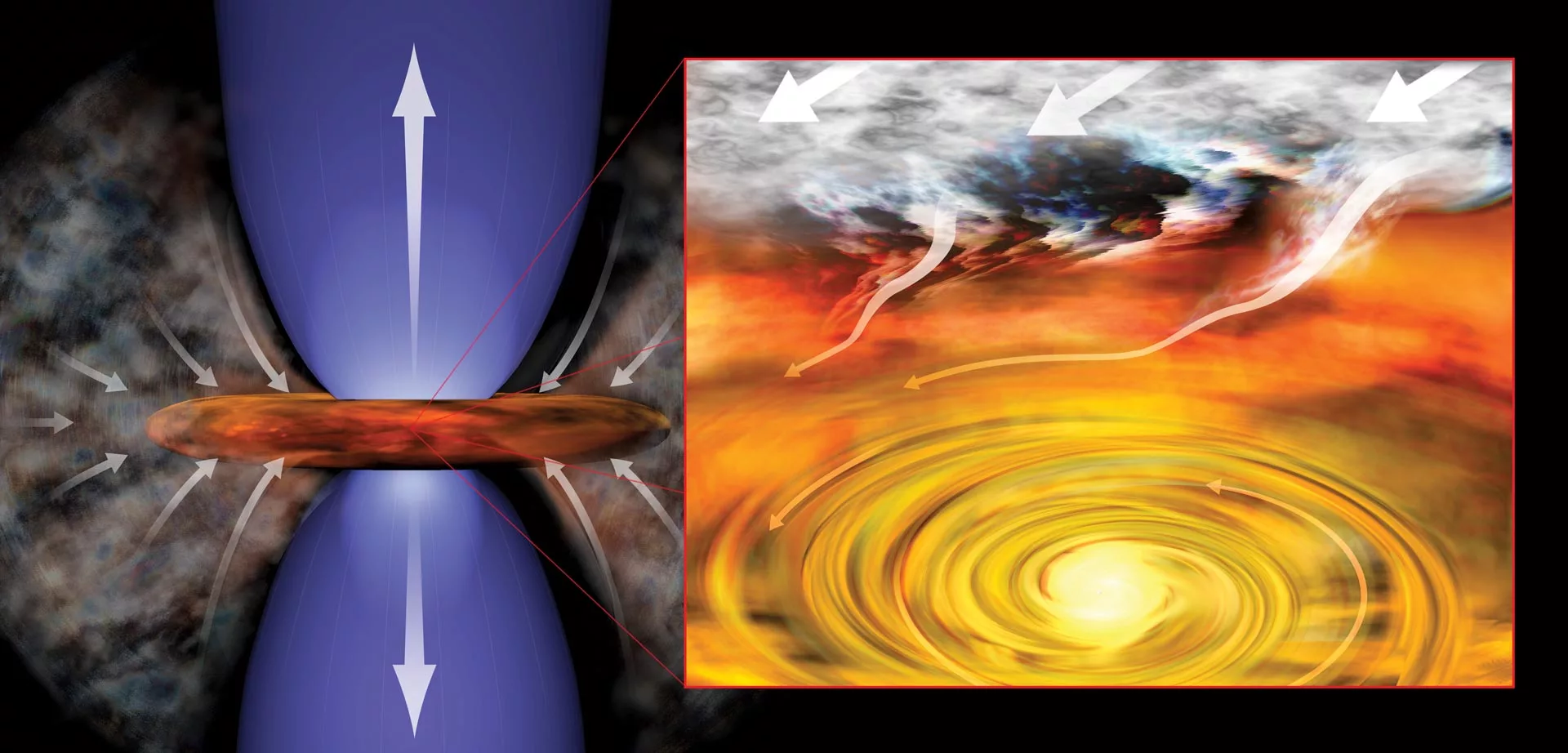At the center of the Milky Way galaxy there sits a supermassive black hole with the mass of about 4 million Suns. With strong swirling gravitational forces and intense UV light and X-ray radiation, the region around it is one of the most extreme environments in the galaxy. That was thought to be too harsh to harbor star formation, but almost a dozen young, rebellious stars have now been spotted there, triggering a rethink of our understanding of how stars are born.
Normally, stars start life as huge clouds of dust and gas in the disk of a galaxy. Particularly dense sections of these clouds eventually begin to collapse under their own gravity, forming stellar buds known as protostars. In turn, these protostars pull in more dust and gas from the parent cloud and gradually grow into a star.

This process is often seen in action in stellar nurseries such as the Orion Nebula, where the conditions are just right. But strong tidal forces can whip the dust away from these budding cores and prevent them from growing properly, while intense radiation can disturb the cloud in the first place.
Flying in the face of that assumption is the recent observation by the Atacama Large Millimeter/submillimeter Array (ALMA) of 11 protostars happily forming in that hostile territory. These low-mass objects, which may one day grow into stars like our Sun, sit just three light-years away from the supermassive black hole at the galactic center.
"Despite all odds, we see the best evidence yet that low-mass stars are forming startlingly close to the supermassive black hole at the center of the Milky Way," says Farhad Yusef-Zadeh, lead author of a new paper describing the discovery. "This is a genuinely surprising result and one that demonstrates just how robust star formation can be, even in the most unlikely of places."

The rebels were spotted thanks to their hourglass-shaped "double lobes", which are created when some of the dust and gas pulled into the protostar is ejected in twin jets from the object's north and south poles. ALMA can pick out these plumes because of molecules like carbon monoxide, which glow brightly at the millimeter wavelengths that the instrument is designed to focus on.
Young stars have been seen forming under similar circumstances before: Earlier this year, the European Southern Observatory noticed young stars forming under similar extreme conditions at the center of a pair of colliding galaxies, but these objects were much bigger and older, at up to 10 million years. These new babies are a mere 6,000 years old, and are closer to the black hole.
The researchers have outlined possible ways the stars might form under these less-than-ideal conditions. To hold the protostars together long enough for them to grow, other forces must be compressing the material. For example, high-velocity gas clouds could be charging through the interstellar medium, or jets given off by the supermassive black hole itself could be squashing the matter into star-forming spots.
"The next step is to take a closer look to confirm that these newly formed stars are orbited by disks of dusty gas," says Mark Wardle, co-investigator on the research. "If so, it's likely that planets will eventually form from this material, as is the case for young stars in the galactic disk."
The research was published in Astrophysical Journal Letters.






